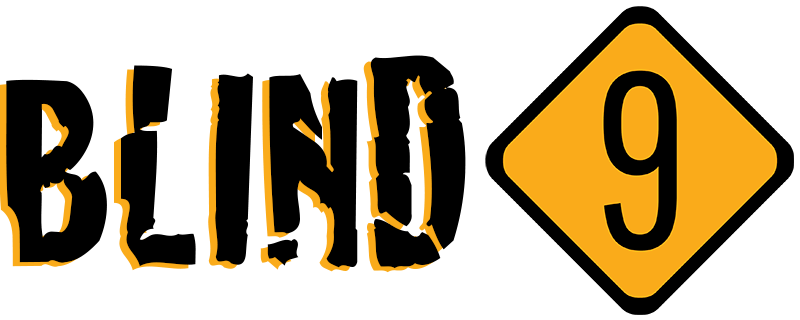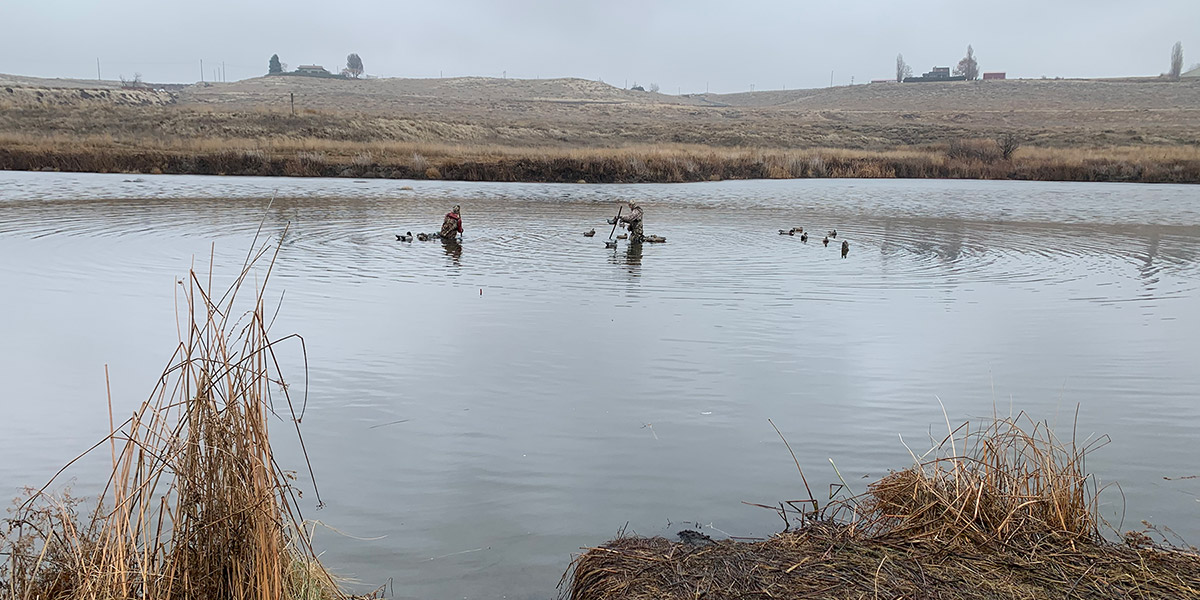Big corn-fed mallards and many other types of birds await you at the Burbank Slough.
To those who believe the grass is always greener on the other side of the fence, I offer this: The ducks are always thicker, and fatter, on the other side of the state. So it seems with McNary National Wildlife Refuge, which sits at the confluence of the mighty Snake and Columbia rivers in the Tri-Cities area of Central Washington.
My first visit here during my second hunting season we shot more ducks in a day than we had in the previous three hunts on the Western part of the state. To be fair, we’re often not hunting the most fertile of the duck lands on the Wetside, keeping to walk-in spots on public lands. However, the Fee Hunt Unit of the McNary NWR is a walk-in spot and is, comparatively, a duck Mecca.
The numbers of ducks in this area during the migration reach almost plague-like proportions, probably due to its trifecta of duckiness: A merging point of Pacific flyway routes along the Snake and Columbia rivers; lots of water, big and small, with open water on the rivers during freezes; plenty of agriculture all around. Apparently it used to be even better. During morning check-ins I’ve heard some folks complain about local private land and hunt clubs affecting migration patterns, luring ducks and geese away from McNary. Well, compared to where we normally hunt, the place does not lack ducks.
One of my most vivid memories of the place came during our second hunt here, in Blind 17. It took us awhile to hike in and we had only about 10 minutes to set up before legal shoot time. We were both scurrying to set up decoys when hunters across the slough began to shoot. Neither of us was in the blind when a couple of hundred mallards flushed from cover and flew over our heads 15 feet high. We could only watch but what a glorious sight.
Planning to Hunt McNary
If you want a guaranteed spot here you will need to participate in the preseason lottery to try to get a blind. They publish the registration on their refuge page in mid-August and close the draws in September. You can select 30 dates from the available hunting days at $1 each. You’ll get an email shortly after the draw letting you know if you got a blind, the date, and pick position. If you get a spot, even if it’s #25, it’s probably worth the trip. Otherwise you’ll need to wait for a standby position. There’s no guarantee you’ll get a blind this way, but I’d bet you would.
On the day of the hunt, drive to check check station at least 2 hours before legal hunting time, which will be published in the State of Washington game regulations for that year. You check in, select your blind according to your pick number and then off you go! They used to limit you to 25 shells, but that regulation has been removed. Bring a couple of boxes if you can’t shoot. Be sure to check the regulations and maps (McNary Fee Hunt Unit) for up-to-date information on regs, fees, and blind locations.
Blinds
The fee hunt unit is on the North/South arm of the Burbank Slough and has about 27 blinds, a mixture of steel scaffold blinds, stakes in the ground, and field blinds. I’ve only been here on both Saturdays and Sundays and had a lottery pick but you’re almost guaranteed a blind, even on standby, due to no-shows, although it gets busier every year! I’m starting to see more regulars from the West side of the state showing up here, too.
You’ll find the blinds brushed up reasonably well, which is needed now that they mow the tules down – for fire prevention I assume. The only staked blind I hunted was blind 10, a royal pain of an island blind. Certainly some are preferred and almost always hunted, including 1, 4, 6, 15, 17, 21, but there’s probably not a bad blind in the place if conditions are right. I’ve been here on an opening day and during peak migration and while opening day gave us plenty of opportunities, November-January migrations offer a constant flow of ducks.
Duck Variety
Another nice thing about McNary is the wide variety of ducks found on the slough. On the final day of the season in 2015 our straps contained mallard, pintail, teal, widgeon, ringneck, scaup, and canvasback (we passed on the shovelers). You could try to bag just fat drake mallards if you’re patient, or you could bag whatever dropped in your spread and call it an early day. While I’ve never been skunked here, not all days are blue-birds. Afternoons can slow down and Sundays are generally worse than Saturdays due to pressure. However, if you catch it on the cusp of weather or when much of the small water is frozen throughout much of the rest of the state you’re in for a great day.
Decoys
Our best luck has always come from decoys placed near the shoreline close to the blind. We’ve tried a number of sets with lines and “V”s extending into the water but find that birds often drop beyond the far points of these. We’ve done some defensive decoying, but nearly always end up bringing the decoys in close. Wind ducks can be very effective here, especially since there’s almost always a good breeze by mid-day. Two- to three-dozen should be plenty for the water here. A mixed bag will assure you of a variety of ducks.
Calling
I’ve gotten to hear a lot of calling at McNary, good and bad. As ducks fly over the water down the slough or as flocks break up high overhead you will hear the callers start blaring. The better callers can bring in ducks and take them away from you. If you get some working your spread, a quick hail call followed by some feeding chuckles and quacks should suffice. But if there are a lot of mallards around and you have a good caller in a blind near you be prepared to compete! On good days you won’t need the call. Visual cues such as the wind ducks or jerk rigs are more effective, even later in the season.
Geese
We’ve only bagged a few geese here and only opportunistically. There are flocks of Canadas and snow geese that pass by but they’re all pretty high. Strays or pairs also will fly over the area, offering you the best opportunity to call them in. I’ve seen that the field blinds get geese, but I prefer the steady action of duck hunting and don’t hunt them.
Waterfowlers’ Tips
- Watch your shots as birds can be hard to retrieve. It’s best to have a dog, some type of small canoe or kayak, or at the very least a long retrieval pole. You may have winds that are blowing away from you, which can blow downed ducks out into the center of the slough, where the water gets higher than the top of waders. You also might drop a bird into the grass or tules near the blind. These also are difficult to find without a dog. Keep your shots close and over the water and you will stand the best chance.
- Dress for the worst. In almost all cases here your feet will be in the water, whether you are in a slightly submerged scaffold blind or whether you are standing in the tall bulrush. Plan your socks accordingly. Also, pay attention to the weather because sometimes the winds here can blow 30-40 mph or more. Layers and some type of protective eye wear in your bag will ease your suffering.
- Watch for sticky mud. Every blind I’ve hunted here has pockets of 4-6-inch deep gooey mud near the blind and below the water. You often will find these pockets on retrieves or when you are placing decoys. Those blinds on the south end of the slough appear to have the worst, especially 17 and 18. It’s never felt like dangerous mud, just inconvenient, but I have not hunted all the blinds here. Again, a dog will ease your pain.
- Be prepared for long walks. Some of the blinds are more than a mile from the parking lots. The paths are wide and fairly easy, until you get close to the blinds, then they narrow. A cart can be a big help, especially at the end of the day.
- Beware of theft in parking areas. I’ve never had a problem with this, but I have read reports of theft in the parking areas here, with unsecured gear in the backs of trucks being the most targeted items. Secure or pack your gear accordingly.

